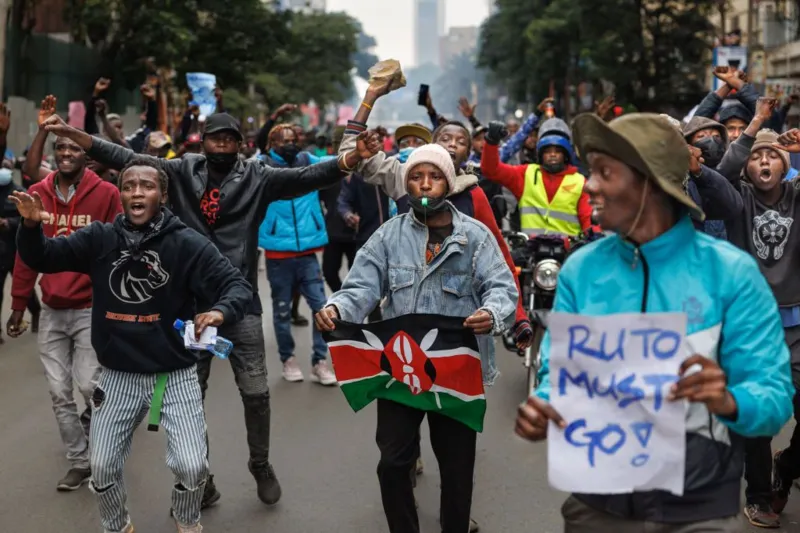
Kenya’s President William Ruto has appointed key allies of opposition leader Raila Odinga to his cabinet, a move aimed at addressing mounting discontent with his government.
Ruto has given four significant posts to the opposition, including the influential ministries of finance and energy.
This marks the first time since Raila Odinga served as prime minister in President Mwai Kibaki’s 2008 government that members of the opposition have been included in the cabinet.
Ruto’s decision comes amid the most challenging period of his presidency, with protests erupting across the country as young people demand his resignation, using the hashtag #RutoMustGo.
The protests began last month over a proposed finance bill with controversial tax hikes and have escalated, culminating in the storming of parliament and a section of it being set on fire.
In response, President Ruto withdrew the bill, but the protests have continued, fueled by anger over police brutality in handling the demonstrations.
In a national address, Ruto said he had consulted widely to form a “broad-based” government that would drive a “transformational agenda” to build a “better, more just and prosperous” Kenya.
However, protesters have rejected this notion, arguing that it is merely a continuation of deal-making among Kenya’s political elite.
The four members of the opposition Orange Democratic Movement (ODM) who are joining the cabinet are:
- John Mbadi (finance, referred to as treasury in Kenya)
- Opiyo Wandayi (energy and petroleum)
- Hassan Joho (mining and blue economy)
- Wycliffe Oparanya (co-operatives and micro, small and medium enterprises development)
In total, Ruto made 10 appointments, expanding his cabinet to 21. About half of the appointees are from his previous cabinet, which has further angered protesters demanding a complete break from the past.
Cabinet appointments in Kenya require parliamentary approval, which is likely given the deal between the two main political parties.
The ODM was split on whether to join the government, with some members viewing it as a betrayal of the people.
Critics of Ruto see this move as an attempt to neutralize the ODM. Some analysts believe the “broad-based” government could unite citizens against a common enemy—an out-of-touch political elite that flaunts wealth and privilege.
It is unclear why Raila Odinga, 79, did not take up a cabinet position, though he may be focused on vying for the role of chairman of the African Union Commission.
Ruto became president in 2022 after defeating Odinga in a closely contested election. He promised more economic opportunities for young people, but his support among them has waned significantly since his rise to the presidency.
The protests began in response to the growing tax burden amid a cost-of-living crisis and widespread government corruption. Over time, they have expanded into broader demands for Ruto’s resignation, an end to corruption, and justice for victims of police violence.
In his speech, Ruto attempted to address some of these concerns, proposing that parliament pass a bill to combat conflicts of interest among politicians and government officials, raising the standard for accountability, integrity, and anti-corruption efforts.
He also promised that charges against innocent people arrested during the protests would be dropped, and that cases of police abuse would be swiftly addressed. However, he added that those involved in criminal activities would be held accountable.
Since the protests began, more than 50 people have been killed, most of them by police gunfire, and hundreds more have been injured.